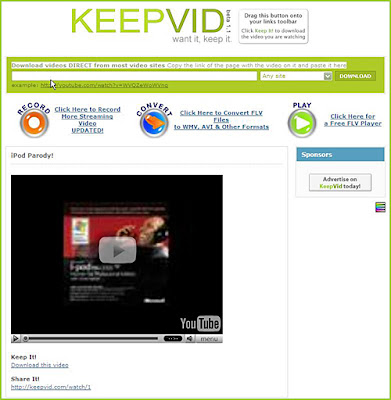Buzzwire lets you stream video, audio, and even live internet radio to your smart phone. Yes, other companies do these too.
However, Buzzwire does this WITHOUT requiring you to download, setting it apart from the crowd.

Mobile media, especially video, is taking off too. Revenue from mobile video in Q1 2007 was $146 million, up nearly 200 percent from the same period last year, according to one industry report. More growth is in the pipeline: As much as 15 percent of American cell phone subscribers have video-friendly 3G (high-speed) handsets, according to mobile analytics company M:Metrics.
Streaming media to mobile phones is not new, but Buzzwire's main competitors, including
MyWaves and
MobiTV, focus exclusively on video and require downloads for the best experience. While MyWaves, which says it has just surpassed one million users, can be accessed from the mobile browser, the video-selection interface contains too much information. Buzzwire, on the other hand, works within the browser, with a relatively clean look and feel, though it still needs work (more below).
Its technology also sets it apart - at a price. They enable wireless carriers to add streaming media, including video, podcasts and internet radio into their offerings with very little development effort. Buzzwire believes that working with the carriers is the only sustainable way to go and, after its beta, intends to charge a $2-$3 monthly subscription. (Higher rates for those who don't want ads….) MyWaves, on the other hand, exists independent of the carriers, giving its service away for free. MobiTV charges $9.99 per month, and includes advertising. Now THAT sucks!
To get started with Buzzwire, create an account on the website, choose channels for your subscriptions, which will appears on your mobile homepage. From this homepage, you can also browse through popular and featured channels, but there is no way to search through all of them and add one using your phone (They promise this capability is in the works).
The interface, while superior to MyWaves, has some issues. For example, if the title of a channel is more than a couple of words, you can't see its whole name, and it's not always clear what's what. Buzzwire's regular website is also visually unappealing and not easy to use, and there is very little high-quality content. To be fair, this is the first iteration, and changes on both of these fronts are in the pipeline.
The big long-term threat is the
iPhone and the change it represents: After watching YouTube videos on that beautiful screen, in a real browser, it feels like applications based in normal mobile browsers are already obsolete. Buzzwire and its ilk believe that with more than 33 million people using 3G phones, there is money to be made with or without the iPhone.
Okey dokey…




